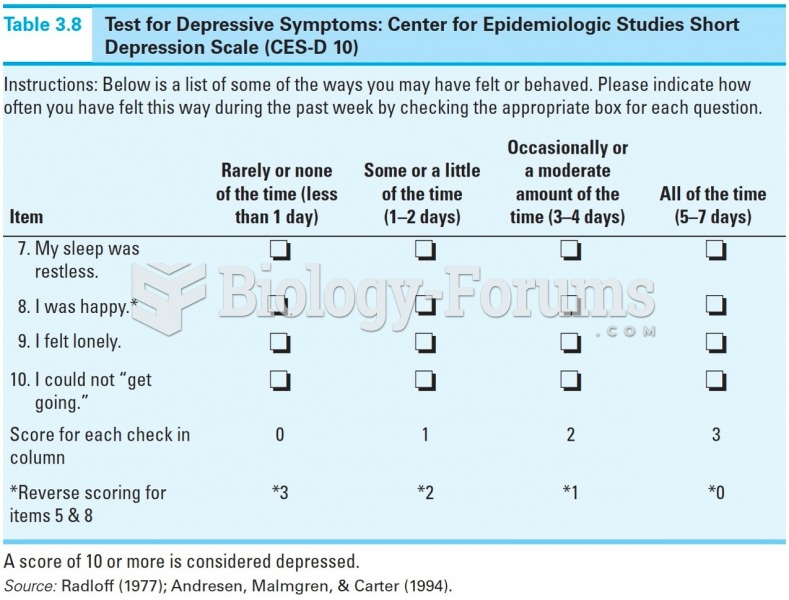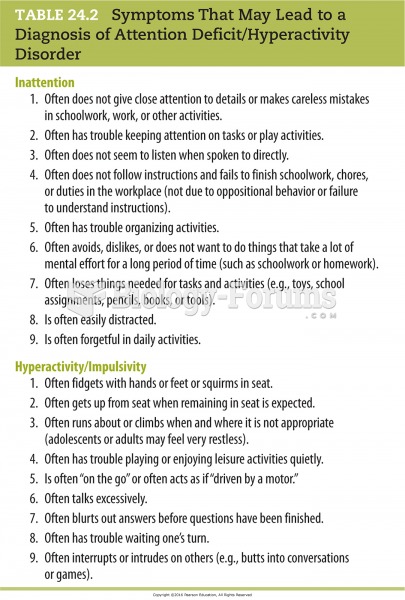This topic contains a solution. Click here to go to the answer
|
|
|
Did you know?
The largest baby ever born weighed more than 23 pounds but died just 11 hours after his birth in 1879. The largest surviving baby was born in October 2009 in Sumatra, Indonesia, and weighed an astounding 19.2 pounds at birth.
Did you know?
Approximately 500,000 babies are born each year in the United States to teenage mothers.
Did you know?
People about to have surgery must tell their health care providers about all supplements they take.
Did you know?
Nearly 31 million adults in America have a total cholesterol level that is more than 240 mg per dL.
Did you know?
If you could remove all of your skin, it would weigh up to 5 pounds.







